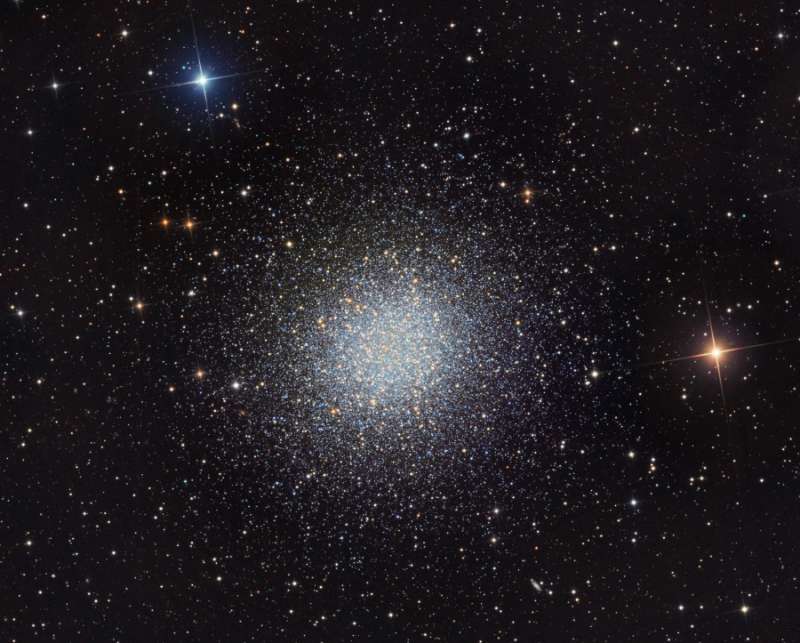
|
Credit & Copyright: Martin Pugh
Explanation:
In
1716, English astronomer
Edmond Halley noted,
"This is but a little Patch, but it shews itself to the naked Eye, when
the Sky is serene and the Moon absent."
Of course, M13
is now modestly recognized as the Great Globular Cluster in Hercules,
one of the brightest
globular
star clusters in the northern sky.
Telescopic views reveal the
spectacular cluster's hundreds of thousands
of stars.
At a distance of 25,000 light-years, the cluster stars
crowd
into a region 150 light-years in diameter, but
approaching the cluster core
upwards of 100 stars could be contained
in a cube just 3 light-years on a side.
For comparison, the
closest star to the Sun is over
4 light-years away.
Along with the cluster's dense core, the outer reaches of M13
are highlighted in this
sharp color image.
The cluster's evolved red and blue
giant stars show up in yellowish and
blue tints.
|
January February March April May June July August September October November December |
| ||||||||||||||||||||||||||||||||||||||||||||||||
NASA Web Site Statements, Warnings, and Disclaimers
NASA Official: Jay Norris. Specific rights apply.
A service of: LHEA at NASA / GSFC
& Michigan Tech. U.
Based on Astronomy Picture
Of the Day
Publications with keywords: M 13 - globular cluster
Publications with words: M 13 - globular cluster
See also:
